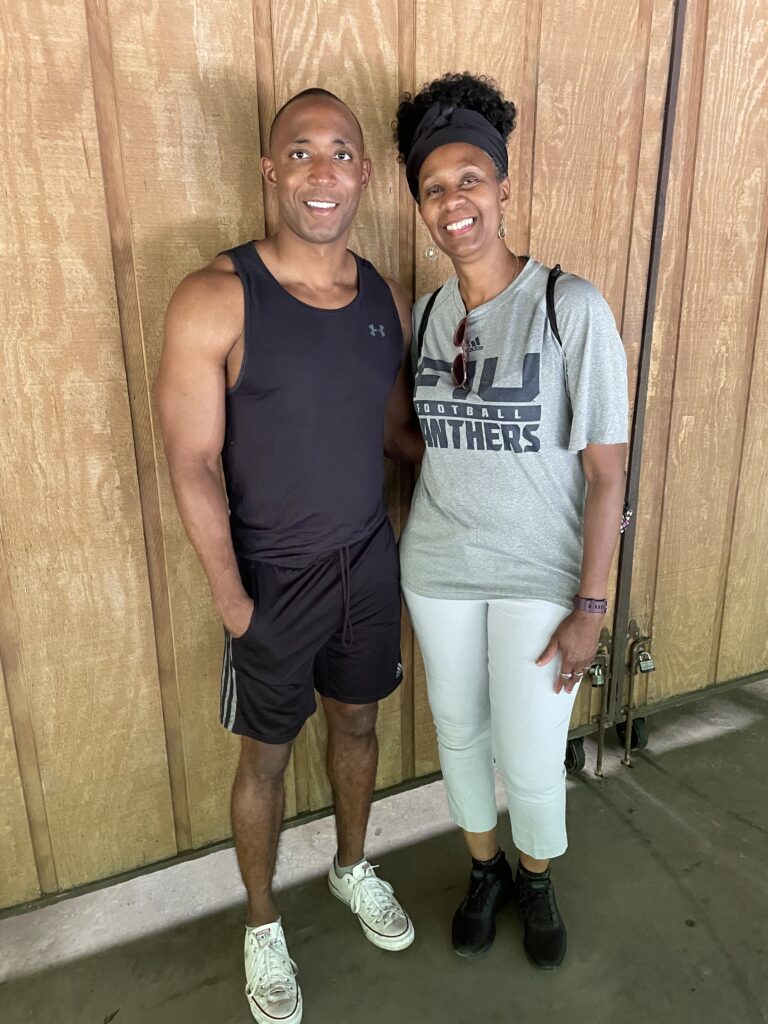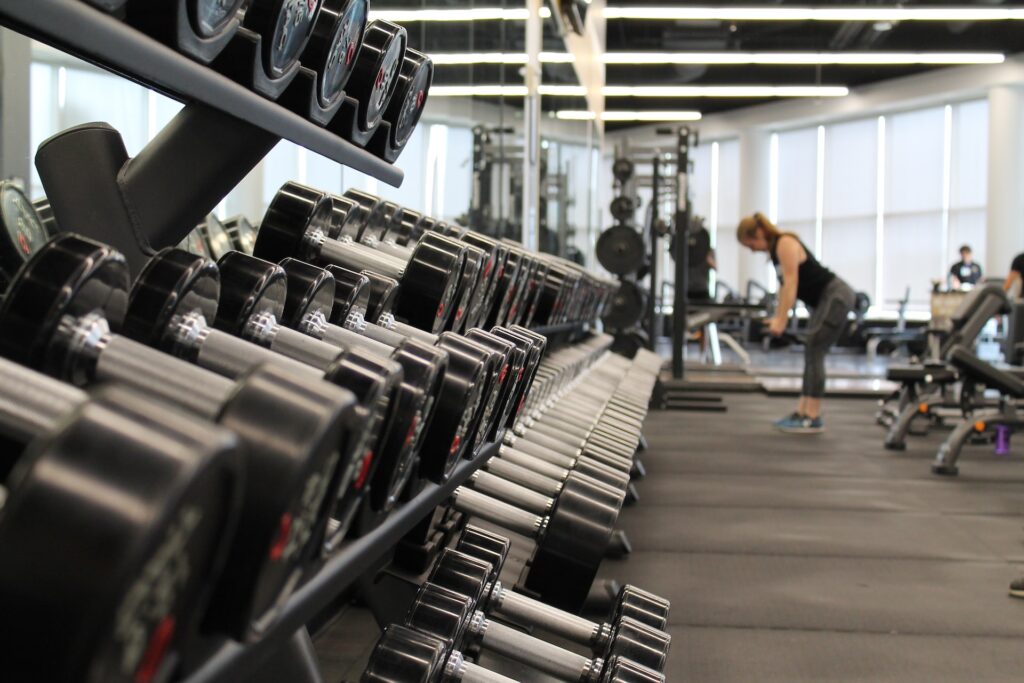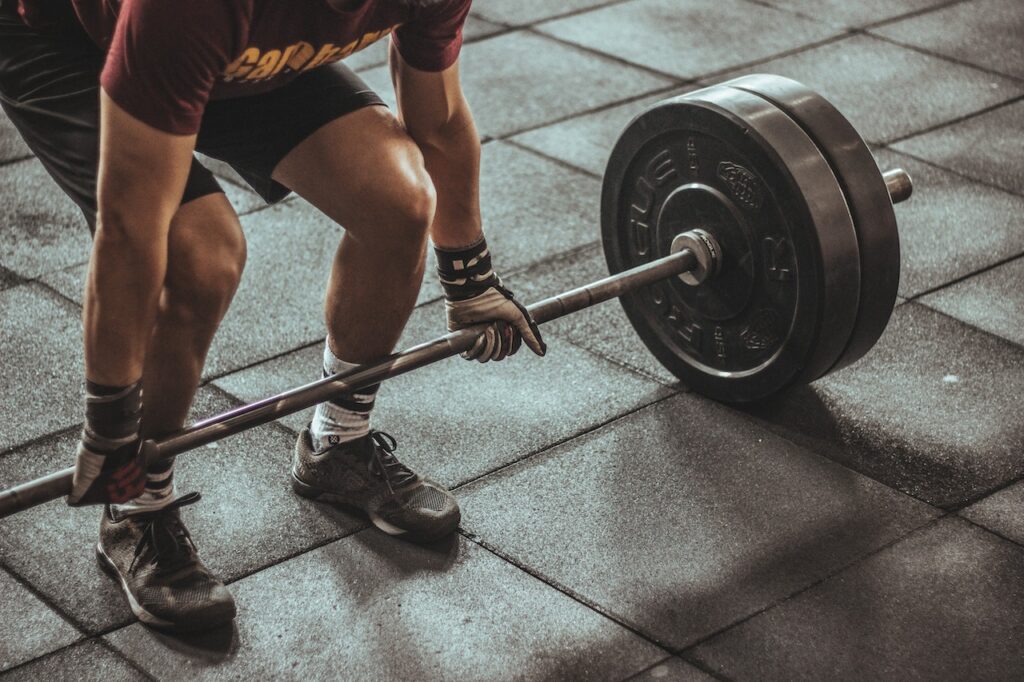
Building Lean Muscle
If you want to build lean muscle, you’ve come to the right place.
Going on a journey to build lean muscle and strength is a worthwhile pursuit that everyone should embark upon at least once in their lives. Achieving a strong, lean body is about a lot more than simply how you look.
In fact, studies show that increasing muscle has the benefit of improving balance, posture, and coordination. Exercising with weights also strengthens bones and helps burn fat – all while staving off the effects of aging.
This guide was created as a straightforward resource to help you build that lean muscle. Whether you are a novice or experienced lifter, this is your roadmap for achieving the body you desire.
Contents
I mentioned in my weight loss journey that I gained 30 lbs of muscle (and fat) after starting a muscle building program. I learned a lot about what it really takes to build lean muscle and made key mistakes along the way. The steps to come are the very ones that I’ve taken in the past – with slight tweaks to steer you away from potential pitfalls.
You’re in good hands on this one since I have close to 2 decades of experience as a weightlifter and several years of professional experience working with athletes and general populations as a personal trainer.
What is Lean Muscle?
The body is made up of a lot of different components such as muscle, fat, organs, skin, and bone. Lean muscle is simply the portion of a person’s total body composition that is comprised of muscle minus the accompanying fat.
An easy way to think of this is by calling to mind 2 different muscular people who have very different body types. One person may have a lot of muscle while also carrying a lot of fat. Similar to me when I was bulking in recent years.

You can see by the above picture that I was pretty muscular while also carrying a bit of fat around my body.
Now, compare that picture to this next one of me more recently after I went through my weight loss journey. In a similar manner, I’m still pretty muscular. But this time around I am a lot leaner which means that I have more overall lean muscle relative to fat.

Benefits of Lean Muscle
I can spend several thousand words on the full range of benefits of building lean muscle. That approach is probably not very beneficial since you’re likely reading this article looking for guidance. You don’t need convincing.
Instead of going that route, I’ll just quickly cover the benefits of lean muscle that really stick out and follow that up with a brief highlight of the others.
Reduces Body Fat
Muscle helps burn fat because muscle burns a lot of energy. This should come as great news for anyone looking to shed a few pounds and tone up.
Injury Proofs the Body
Simply put, muscle makes the body stronger which makes the body less prone to injury. Building lean muscle through resistance training strengthens bones, connective tissues such as tendons, and of course strengthens the muscle.
Improved strength of these bodily structures means that they are more robust, durable, and prepared for the demands of life.
Helps with Diabetes, Heart Disease, Stroke and More
Take a moment to examine the following quote..
metabolic defects overlap and converge upon one another, with insulin resistance at the juncture of aging, muscle atrophy/sarcopenia and obesity. Indeed, these metabolic disorders are so intertwined that the term “sarcopenic obesity” has been coined to describe the toxic feedback loop between increased fat mass (obesity) and decreased skeletal muscle mass (sarcopenia), where one exacerbates the other
Heber, David, et al. "Clinical detection of sarcopenic obesity by bioelectrical impedance analysis."
What this is saying is that there is a critical connection between obesity, age related muscle loss, and diabetes. As such, the good news is that lean muscle my help with all of these things.
Other Benefits of Lean Muscle
The few benefits of lean muscle outlined above are the ones that stand out most, but i’d like to also call out some others to really drive things home.
- Boosts Your Metabolism
- Slows Aging
- Improved Immune System
- Promotes Joint Health
- Improves Heart Health
- Greater Confidence
How to Build Lean Muscle
We are going to explore this process from 2 different perspectives to ensure you have the right information.
The first will be an outline for beginners who are generally newer to the world of exercise and nutrition or those who have been out of practice for some time. We’ll then follow this up with an outline for those who may have more experience but need a catalyst to boost them toward better results.
The step by step process is right around the corner, but before I get there I must make a very short aside to ensure we level set on expectations.
"You Ain’t Gonna Get Big Just Staring At the Weights"
These were the words often echoed by my legendary P.E. coach back in high school.
As an athlete, my favorite place to hang out after school was the weightroom. On any given day you could find a handful of the most dedicated offseason athletes in the gym pumping iron which meant that this was also a great place to just “hangout” with the guys.
Naturally, our weightlifting sessions would turn into a bit more hanging out than working out from time to time. And on numerous occasions our beloved phys ed. coach would storm into the weight room and yell those infamous words.
You Ain’t Gonna Get Big Just Staring At the Weights!
Legendary P.E. Coach
Building Muscle Requires Weightlifting
It took me many years to recognize the brilliance in coach’s statement. Because on one hand, it’s pretty obvious that you won’t build lean muscle by simply staring at the weights. But on the other hand, it’s what was implied by the statement that made it brilliant.
At the root of what my coach was getting at is the universal law that the achievement of any goal or result requires actual work and effort to make it happen.
What our coach was trying to tell us is that we must get to work in order to achieve our athletic goals – and that we must work hard if we are to achieve any of our other life goals.
For our purposes, we are focusing on building lean muscle so let’s ensure we are all on the same page that building muscle requires that you do some weightlifting.

Building Lean Muscle as a Beginner
For our purposes, we will define a beginner as someone who has:
- never been a weightlifter.
- lifted some weights in the past, but has never been a weightlifter for longer than 12 consecutive months at any point in their lives.
- Experience with lifting for any length of time in the past, but has not been in the gym in the last 3 months or longer.
Beginner Gains
The great news for novices is that they benefit from a phenomenon that is known in the fitness world called beginner gains.
The term beginner gains refers to the enhanced ability of new weightlifters to build lean muscle and strength at a rapid rate. The growth potential is so strong that total beginners who have never lifted before could reasonably expect to gain up to 30 pounds of muscle in a single year with the right approach.
Without getting too technical, I’ll simply state that the reason for beginner gains lies in the fact that novice lifters experience more sensitivity to exercise since the stimulus is new.
Over time, a lifter exposes themselves to the stimulus of exercise and the body does not respond as strongly as it once did assuming you have been training hard enough for long enough.
A good analogy here would be to consider what happens with first time coffee drinkers versus those who have been sipping the beverage for many years. A first timer may experience intense benefits of coffee such as energy and euphoria while a more seasoned drinker would probably need a cup just to feel normal each morning.
Muscle Building Steps for Beginners
I introduced the concept of beginners gains because they mean that, as new lifter you won’t have to do a ton of weight lifting to see some pretty impressive benefits right out of the gate. As such, you will still need to work hard at the process and stay consistent so be prepared.
That said, let’s see how it’s done.
Step 1: Consistent Weightlifting
This is the place to start because, as my high school coach said – you won’t build lean muscle if you don’t lift any weights. The requirement for this step is for you to begin weightlifting 3 days per week.
How to Lift Weights
You’ll get the most bang for your buck if you focus the majority of your time on large muscle compound movements. Compound movements are those which require multiple joints and muscle groups to work in tandem to properly perform.
You want to focus on movements such as squats, lunges, and deadlifts for your lower body and chest press, push ups, and shoulder presses for your upper body.
Aim for 2 – 3 sets of each movement and 6-10 reps per set. Beginners don’t really need to push past this amount of reps as they should focus on mastering form.
Youtube has thousands of great guides to help you along the way or you can use an online guide from a reputable online source.
Consistency is Key
The secret to building muscle lies not in the program you choose to follow, but more so in the consistency with which you do things. Simply put, consistency is the most important factor when it comes to building muscle.
Consistency means not missing sessions during the week and also maintaining your process for an extended period of time.
Step 2: Progressively Load Your Workouts
Progressive loading is the process of gradually increasing the amount of work you do in the gym. More specifically, doing more work primarily refers to slowly increasing the amount of weight you use for your movements and secondarily refers to you tweaking either the number of reps, sets, or rest times.
A Simple Example to Illustrate
Imagine that you are starting out in the gym and are doing squats with a total weight of 100 lbs for 3 sets of 10 reps. After several weeks you will notice that the weight becomes fairly easy compared to when you first started. At this point it’s time to progressively load your squats by adding 5% more weight or 5lbs.
As such, the new total weight of 105 lbs will be a little challenging initially, before gradually becoming easier over several weeks.
You’ll maintain the process of adding 5% to your lifts every 2 – 4 weeks for a while before selecting a new exercise to keep things fresh.
Over time, you’ll reach a point where you can no longer reasonably add 5% total weight. Not to fret because you still have several other variables you can adjust to keep your progress moving forward. You can add additional sets, decrease your rest times, or do more reps of the same weight per each set.
All of these are great options to progressively load your workouts although I recommend you start off by focusing on the 5% total weight increases if you can safely do so.
Step 3: Diet and Nutrition
When it comes to building muscle, protein is king. The major rule for this step if for you to consume .75 to 1g of protein per pound of body weight per day.
For example, if you weigh 180lbs you will calculate your protein requirement like such:
180lbs x .75 = 135 grams of protein
Executing this step will likely be a challenge for most people, but it can be done with a lot of effort and attention to detail.
How to Measure and Track Protein
I’d argue that most people can benefit from having a food scale in their homes. This is especially true for those who are looking to take control of their bodies because controlling inputs such as protein and calories enables you to control the final results.
Be sure you purchase a food scale and begin using it to measure out your protein portions. One measured out, you will then plug the numbers into a calorie tracking app to tally up all of your numbers for a given day.
I personally use MyFitnessPal but there are several others on the market that I have heard positive things about. It’s your call on which you use, but you must use one to ensure you are hitting your protein goal.
A Balanced & Healthy Diet
In addition to hitting the protein requirement, you should ensure that you are eating an overall healthy diet consisting of whole, non processed foods.
For the sake of time, I won’t use this article to go into all of the details on what to eat. But I will briefly say that the best way to ensure a healthy diet is by cooking more at home as opposed to going out to eat at restaurants.
Building Lean Muscle as an Intermediate
The process for an intermediate weightlifter differs a bit from that of a beginner due differences in the way the body responds to exercise. Generally speaking, intermediate weightlifters have exposed their bodies to a lot of weightlifting stimulus over time and are no longer as sensitive in response.
This is actually a good thing and means you have been doing things the right way if you fall into this group. It does take time and consistency to get here though, so let me list out what I define as an intermediate weightlifter.
For our purposes, we will define an intermediate weightlifter as someone who has:
- Consistently lifted weights for 2 – 4 years
- Has previously lifted weights for a period of 2 – 4 years, took a short break of less than 3 months, and has been back in full swing for roughly 1 year.
I want to be sure to call out that these are rough guidelines. In sum, an intermediate weightlifter is someone who has multiple years of experience, is proficient with most weightlifting movements, and has a history of consistent – uninterrupted training.

Muscle Building Steps for Intermediate Weightlifters
Step 1: Train with Volume and Intensity
An intermediate lifter seeking to build lean muscle must be prepared to take their training up a notch in order to continue to make significant progress.
For starters, I’m going to give a simplified definition of volume for the sake of clarity. Volume refers to the total amount of work being done in a strength training session. For example, if you only did 3 sets of 10 rep bench press for your workout – your volume would be 30 reps for that day’s session.
Intensity refers to the amount of weight used during a session as a percentage of your 1 rep max. For example, imagine that your bench press 1 rep max is 100 lbs. Now imagine that you are doing 3 sets of 10 with 70 lbs. You’d be working out at 70% intensity in this case.
Years’ worth of proven research shows that a solid range for muscle building is 75 – 85% intensity for 3 -4 sets of 8 – 12 reps.
I personally like to push the upper end of this range and beyond to up to 20 reps. This is just my preference and worked well for me when I was putting on my 30 lbs of muscle. But it certainly isn’t for everyone and you should decide what works best for you.
Step 2: Get Your Protein
As I mentioned in the beginner weightlifter’s section, a generally recommended amount of protein for weightlifters is to consume .75 to 1g of protein per pound of body weight per day.
I recommend that intermediate lifters aim for the very upper limit of this range and consume 1g of protein per pound of body weight. This is what I did with very good results.
Step 3: Consume a Slight Calorie Surplus
This is not a section that suggests you should go into a bulk. I carefully chose the words slight calorie surplus because your goal should be to build lean muscle without the extra fat that comes with traditional bulking.
To that end, you want to aim to increase your calorie intake by roughly 5% while you are training hard to build lean muscle.
You can expect to see your weight increase slightly as you build lean muscle via the hard training and a surplus of calories, but you’ll eventually plateau at this level and need to add an additional 5% to keep making progress.
Continue to add a small amount of calories every month or so but don’t become too aggressive. My recommendation is to be patient with this process and do things as slowly as possible. Rushing this step and adding calories too fast will result in fat gains which only makes things harder later as you will then have to aggressively cut.
Slow and Steady Wins the Race
Believe it or not, all muscle in the body combines to form a single organ system that works in harmony to keep us upright and gracefully moving throughout our lives.
All living, breathing organisms need to be nurtured and treated well to thrive. Muscle is no different.
That said, it’s best to go about the process of building lean muscle slowly and methodically rather than aggressively.
Taking things slow will help you build lean muscle while enhancing your skill level with weightlifting movements – all while minimizing your risk of injury or burnout.
Try these recommended steps and see how they work for you. Then come back and drop me a line in the comments with your results. I look forward to hearing from you!
